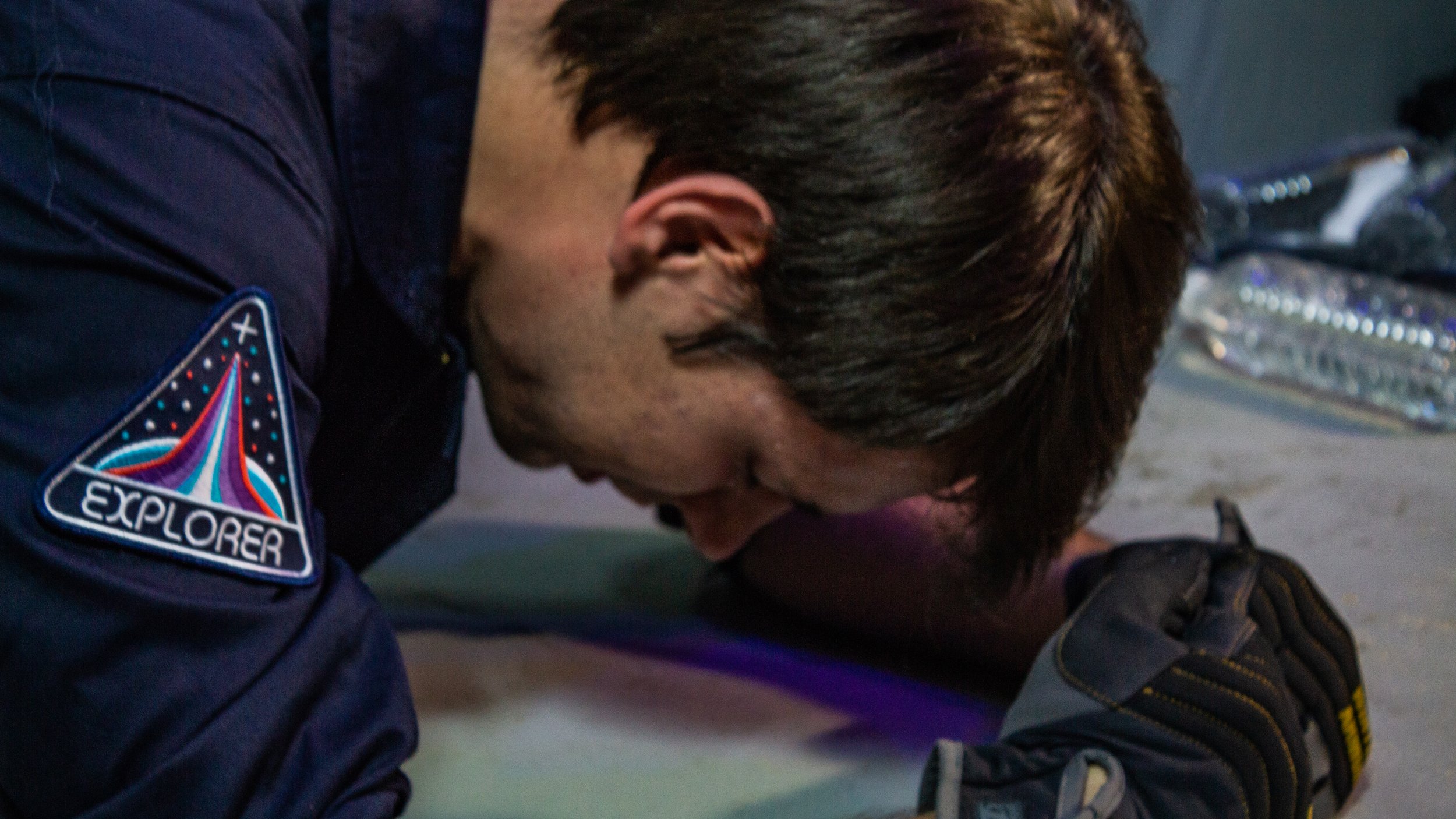Lesson Learned: “Adrift”
I thought that in my career, I would look back and laugh at the mistakes I made early on. Mistakenly, I assumed those laughable mistakes were behind me, resting peacefully with the likes of "The Door." I thought wrong.
Someone said we learn and grow the most from our mistakes, and never is that more clear to me than when I revisit the, what I consider to be, botched project that is "Adrift." Let's dig a little into what happened and how my team and I are the better for it.
The Background
During a rather difficult time in my life, I drafted the first copy of Adrift as a way to escape. The script went through several re-writes, but what came out was very pleasing to me. It had heart, intensity, drama, and most of all potential. I threw myself into pre-production, ready to tackle the rather ambitious project. This was our first science-fiction film as a team, and the task seemed daunting, especially when working with the highest budget we'd had to date. We scrambled for crew, talent, and time as we scheduled the shoot dates and raced against the clock to convert the bonus room in my home into a working sci-fi sound stage/set. It was rather impressive when completed, but due to the restrictions we placed on ourselves, there were several factors that were overlooked.
Lesson One
The only restrictions are the ones you give yourself.
From the start, we knew that time was going to be an issue. As we were casting the film and getting our crew together, it was apparent that schedules weren't always going to line up. So a tentative schedule was set, and we stuck as closely as we could. However, the set began to take longer to build than we thought, the casting process began to take longer, and things weren't looking good. Rather than put things on hold or simply delaying the process by a week or two, as we should have, we pushed on with our schedule, intent to make the film on time. This was our first big mistake that became more apparent as we began filming. The set was not as functional as we originally planned. It was a little too large, and things began to break under the strain. The set could have waited for one more week while we got everything into working order. On top of that, there were pieces of the set that I wanted that weren't completed by the time day one of principal photography rolled around. Due to the scheduling we placed on ourselves earlier, I shrugged it off in the hopes that it would look better later. It didn't. As a result, there were shots that I simply couldn't use, which made for a much different story than originally penned. No matter what level you are at, if the project is too rushed and you are not getting what you want, don't waste another minute. Step back, re-evaluate, postpone if you have to, and start again knowing what you need to do to solve the problem. Don't wait, or it will become a bigger issue than you originally thought.
Lesson Two
Pay attention to the little things, because the littlest things have the nastiest habit of making the biggest difference later on.
My attention to detail in my past films has been decent; not great, but decent. I've been able to take a look at a scene and immediately know what I was supposed to do/film/direct, especially with films like "Better." But with the challenge we gave ourselves, I got lost in the grandeur of the story. I succumbed to the worst possible temptation when directing: I focused on the whole story and not the little stuff. Don't get me wrong, the director is the keeper of the story, absolutely. However, the director is also in charge of making sure that every little thing - every prop, every footstep, every hair - serves the greater story. When things go by without the director noticing, that's when the audience gets taken out of the story. The director needs to pay attention to the details so the audience doesn't have to. The audience should be immersed in the story, and nothing ruins that immersion quicker than a frame that shows the man behind the curtain, so to speak; a frame that ruins the illusion. "Adrift" was riddled with those frames, and I blame no one but myself, knowing that I let those details slip by, sometimes even consciously, for the sake of time and the bigger picture. Never lose yourself to the bigger picture, or conversely, to the details, but strike a balance between the two, letting the details catch your attention so they can support the bigger picture.
Lesson Three
The heart of the film is in the heart of the filmmaker.
One glaring omission in the film "Adrift" is the lack of heart. In the script, there is a beautiful presence of heart, but the film seems to lack it. I wholeheartedly blame myself, as I began to get lost in the challenge of our "biggest budget" film to date. In the midst of all the bustle, I lost some of my original vision. I've always tried to write and direct honestly, from a place of vulnerability and desire, but during the filming, I seemed to shut myself off to that and got lost in the chaos around me. This was the biggest mistake and travesty of the film by far. As a director, my heart needs to be seen on screen and peeled back in such a way that the audience can identify with the story, but I lost sight of that. I gave all the funds, energy, and sweat that I could, but I did not give it my heart, which is sad because the actors did. They gave their best, even to the point of lying down on the set after finishing a shot and letting the crew tear down the set around them as they laid glued to the floor in an almost catatonic state. At the end of the day, your film needs to show your vulnerable side, the pieces that make you scared, sad, afraid, happy, and everything in between. Show those through your film and the audience will identify with it every time.
Conclusion
It's not the mistake that makes the artist, it's the getting back up and learning that defines you.
You are not your mistakes. That's something I had to learn throughout this process. The end result of "Adrift" left me so weary and disheartened, and I wish it could have been realized to its full potential. Maybe one day we'll revisit the original script and make the film we always wanted, but maybe not. Maybe this sits here to remind us that we are not the mistakes we make. We are the choices we make following the mistake. We are the sum of the solutions and lessons we take with us once we get back on our feet. So whether you've made one mistake or many, the same choice still remains: will you get back up and learn or will you stay down and quit? Quitting was not an option for me. It took me nearly a month to get over "Adrift," and in some ways, I'm still learning from it. After I couldn't take much more of this film ruining my career, I decided to make another short film. I penned an easy but very emotional script; one that would be inexpensive to film, but powerful to grab attention. I wanted to prove to myself that I was better than "Adrift," that I could do better. I am pleased to say that the following film, "Role Model," turned out to be one of our team's best efforts to date, and we only took a month total to write, collaborate, film, edit, and produce that film. But all that came because my team and I refused to quit. So refuse the temptation to quit. Spit in its face. Get back up and do it again, this time with the weapons of your lessons. And whatever you do, don't look back except to learn.





